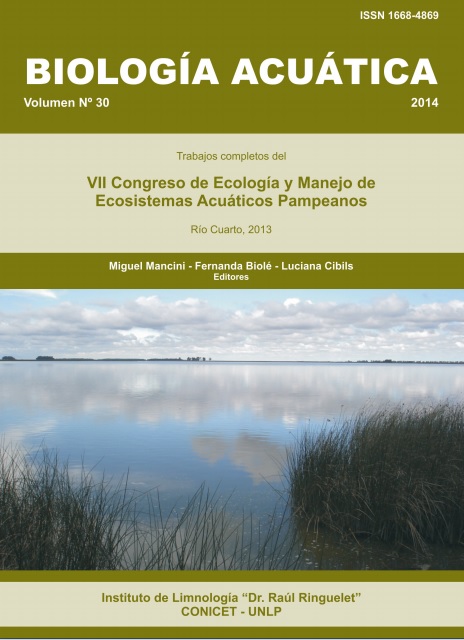La vegetación de ribera como indicadora de calidad ambiental en ríos serranos de la provincia de San Luis (Argentina)
Keywords:
invasive plants, riverbank, anthropization, ArgentinaAbstract
The quality of the rivers can be analyzed using the characteristics of the vegetation of its banks. Nowadays, these habitats are being degraded at an accelerated rate by human disturbance. The aim of this study was to use the riparian vegetation of three rivers of the Sierra de San Luis (Argentina) as an indicator of the quality of aquatic environments. Fourteen phytosociological inventories were conducted in randomly selected sites on the banks of Potrero, El Volcán and El Trapiche rivers. In addition to the inventories, an anthropization index was calculated and a total of 23 alterations were identified. Each of these were assigned a value 0 (zero), 1 (low), 2 (medium) and 3 (high). These values were summed up to obtain a final score for each site. The results indicated that areas with higher anthropization possess a higher richness and coverage of invasive plants species, which are characteristic of disturbed sites. The site with the highest human disturbance was located on the banks of river El Volcán, while the lowest value was found in Potrero river. It can be inferred that invasive plants and the riparian communities’ characteristics are good indicators of the environmental quality of these rivers.





















